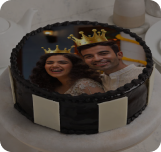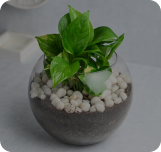About Navratri
About Navratri
Navaratri is a festival celebrated by the people related to the Hindu culture. Navaratri is a Sanskrit word in which 'nava’ meaning nine and 'ratri’ meaning nights. That’s why it is celebrated in the span of nine nights. It is the post-monsoon autumn festival and also known as Sharada Navaratri. The festival of Navaratri is mainly celebrated in the honor of the goddess Durga. Furthermore, the Navaratri festival is celebrated in the bright half of the Hindu calendar month Ashvin which usually falls in the months of September and October of the Gregorian calendar.
It is celebrated differently as well as for different reasons in various parts of India. In the eastern and northeastern states of India, Durga Puja is celebrated at the time of Navaratri. The festival celebrates the battle and the victory of goddess Durga over the buffalo demon Mahishasur to help restore Dharma. In the northern and western states, the festival is related to the epic tale of Ramayana and the battle and victory of god Rama over the demon king Ravana. Furthermore, in southern states, the victory of different goddesses, of Rama or Saraswati is celebrated. Overall, the main focus for celebrating Navaratri is the battle and victory of Good over Evil based on a regionally famous legend.
Theoretically, Navaratri falls four times a year namely, Sharada Navaratri, Chaitra Navaratri, Magha Navaratri, and Ashada Navaratri. Among these four Navaratris, Sharada Navaratri, which falls in the month of September- October, is the most famous and celebrated one. Furthermore, Chaitra Navaratri, which falls in the month of March- April, is the second most celebrated one.
Significance Of Each Day Of Navratri
The festival is mainly associated with the goddess Durga and her victory over the demon king Mahishasura and celebrates the victory of Good over Evil. Navratri is celebrated for nine days and each day is dedicated to goddess Durga and her nine Avatars, the Navadurga.
Pratipada - Day 1 Of Navaratri
The first day of Navaratri is dedicated to Shailaputri, which means daughter of Mountain, an incarnation of Parvati. In this form, the goddess Shailaputri is worshiped as the wife of Shiva. Furthermore, she is depicted as riding the bull named Nandi with a trishula in her right hand and a lotus in her left. Shailaputri is also considered the direct incarnation of Mahakali. The color of the day is red which depicts action as well as vigor.
Dwitiya - Day 2 Of Navaratri
On the second day, Goddess Brahmacharini is worshiped who is another incarnation of Goddess Parvati as her unmarried self Sati. Brahmacharini is worshiped for moksha and to get peace and prosperity. She is depicted as walking bare feet with a japamala and a kamandala in her hands. Goddess Brahmacharini symbolizes bliss and calm. The color of the day is Royal Blue.
Tritiya - Day 3 Of Navaratri
The third day is dedicated to Chandraghanta. The name derived from the fact that after marrying Shiva, Parvati adorned her forehead with the half moon. She is the embodiment of beauty as well as the symbol of bravery. Yellow is the color of the third day.
Chaturthi - Day 4 Of Navaratri
Goddess Kushmanda is worshiped on the fourth day. Kushmanda is believed to be the creative power of the universe and associated with the endowment of vegetation on earth. She is depicted as having eight arms and sits on a Tiger. The color of the day is Green.
Panchami - Day 5 Of Navaratri
Goddess Skandamata is worshiped on the fifth day of Navaratri. She is the mother of Skanda or Kartikeya. The color of the day is Grey which is a symbol of the transforming strength of a mother when her child is in danger. She is depicted as riding a ferocious lion, having four arms, and holding her baby.
Shashtami - Day 6 Of Navaratri
On the sixth day, Katyayani is worshiped. She is an incarnation of Durga and known to show courage. She is known as the warrior goddess and considered one of the most violent forms of Devi. She is depicted as riding a lion and has four hands. Furthermore, she is a form of Parvati, Mahalakshmi, Mahasaraswati. The color of the day is Orange.
Saptami - Day 7 Of Navaratri
The seventh day is dedicated to Kalaratri who is the most ferocious form of Goddess Durga. It is believed that to kill the demons Sumbha and Nisumbha, Goddess Parvati removed her fair skin which turns into black. She is depicted as wearing a red colored attire and tiger skin with a lot of rage in her fiery eyes. The color of the day is white.
Ashtami - Day 8 Of Navaratri
On the eighth day, Goddess Mahagauri is worshiped who symbolizes intelligence as well as peace. The color associated with this day is Pink which depicts optimism.
Navami - Day 9 Of Navaratri
On the last or ninth day of the festival, people pray to Siddhidhatri. She is believed to possess and bestow all types of Siddhis. She is depicted as sitting on a lotus and has four hands. She is also known as Goddess Saraswati. Furthermore, Siddhidhatri is also seen as the Ardhanarishvara form of Shiva and Shakti.
Why Do We Celebrate Navaratri?
The Navaratri festival celebrates the victory of good over evil and knowledge over ignorance. It is in different ways throughout India. In some regions, people fast during Navaratri while some people feast. In some regions, people worship the Goddess Durga whereas some people worship different incarnations of her. Furthermore, some people worship Lord Rama. During the span of nine days, Hindus worship nine goddesses who are the incarnation of Devi Durga. Apart from this, we can see stage decorations, recital of the legend, enacting of the story, and chanting of the scriptures of Hinduism on the occasion of Navaratri. Furthermore, during Navaratri or Durga Puja, people visit pandals with their family and we can also see the public celebration of classical and folk dances of Hindu culture.

















